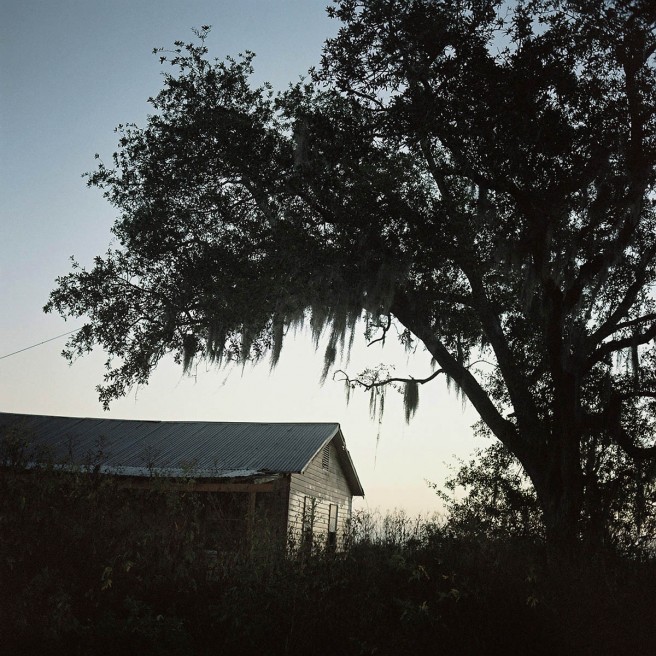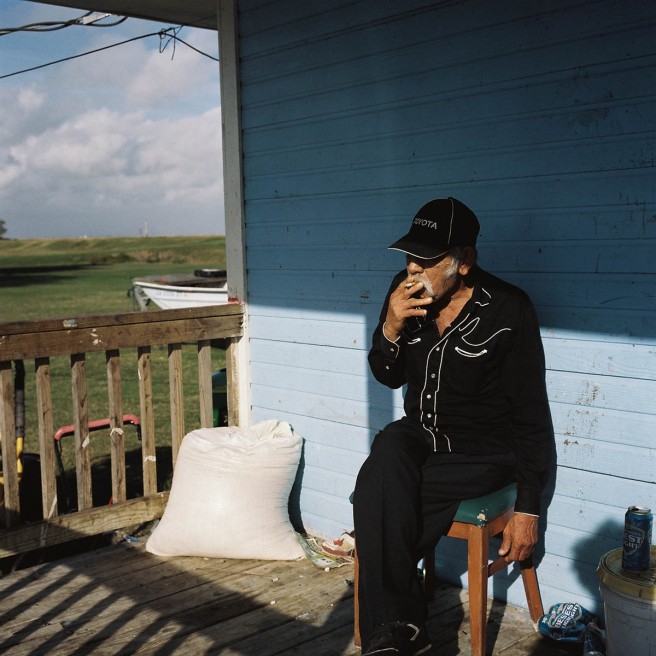Last Stand on the Island A documentary-in-progress by Evan Abramson and Carmen Elsa Lopez
Off the coast of Southern Louisiana lives a man of the sea. Edison Dardar was born on a fisherman’s boat near Isle de Jean Charles, where he has lived his entire 74 years. Each morning, a mixture of howling winds and salty air wakes him up. Half asleep, he climbs on his much-too-small bicycle and starts his journey. As he pedals down the island, visions of lush, merrier days follow him along skeletons of oak and cypress trees, weathered toys and sofas, exposed bathrooms and deserted driveways that belonged to members of his tribe that are now gone. He follows the flooded Island Road that links his community to the mainland, passing the eroding and expanding canals of the oil and gas industry, into the disappearing marsh, where he climbs off the bike and gracefully casts his net into the water. This is the life he cherishes and he is prepared to shoot you if you get in the way. And Chief Albert is getting in the way.
Chief Albert lives in a 3-bedroom brick home with a golf cart and a flat screen TV in suburban Montegut. As the Chief of the Biloxi-Chitimacha-Choctaw tribe he is fighting for what is best for his community. At 63, he is tired of repairing the destroyed homes of tribal members year after year. The hurricanes will keep coming; the isle will keep sinking. He is fighting to get his tribe out of the isle and into a safer place on the mainland: a fenced-in piece of property with one hundred homes only for members of the tribe.
For Dardar, it’s very much like prison. “What am I going to do every morning when I wake up? Stare at the road?” A fisherman alien to driving, shopping malls and the more civil suburban life, this forced transformation is worth fighting against. In front of his patched home raised two stories off the ground, Dardar arms himself with $200 worth of ammunition, 4 guns and a hatchet. “I’m fixing on getting my hands on a machine gun,” he says with a twinkle in his eye, adding under his breath, “My land is beautiful, really beautiful. That’s why they all want it.”
Strangers have been invading Isle Jean Charles since the road was built in 1951. Oil and gas companies started digging canals to transport workers and equipment, which has opened the way to salt water erosion. Dardar’s neighbor and tribal elder Mr. Billiot remembers, “they started digging and digging and it kept on getting worse and worse.” Forests of oak trees used to cover the land around his house. He had vegetable gardens, horses and cows. Now, sitting in front of his porch he stares at the barren landscape and water beyond. He and his wife still won’t follow Chief Albert to the mainland, and like Dardar, they’re prepared to die for the island they love.
Text by Carmen Elsa Lopez


































